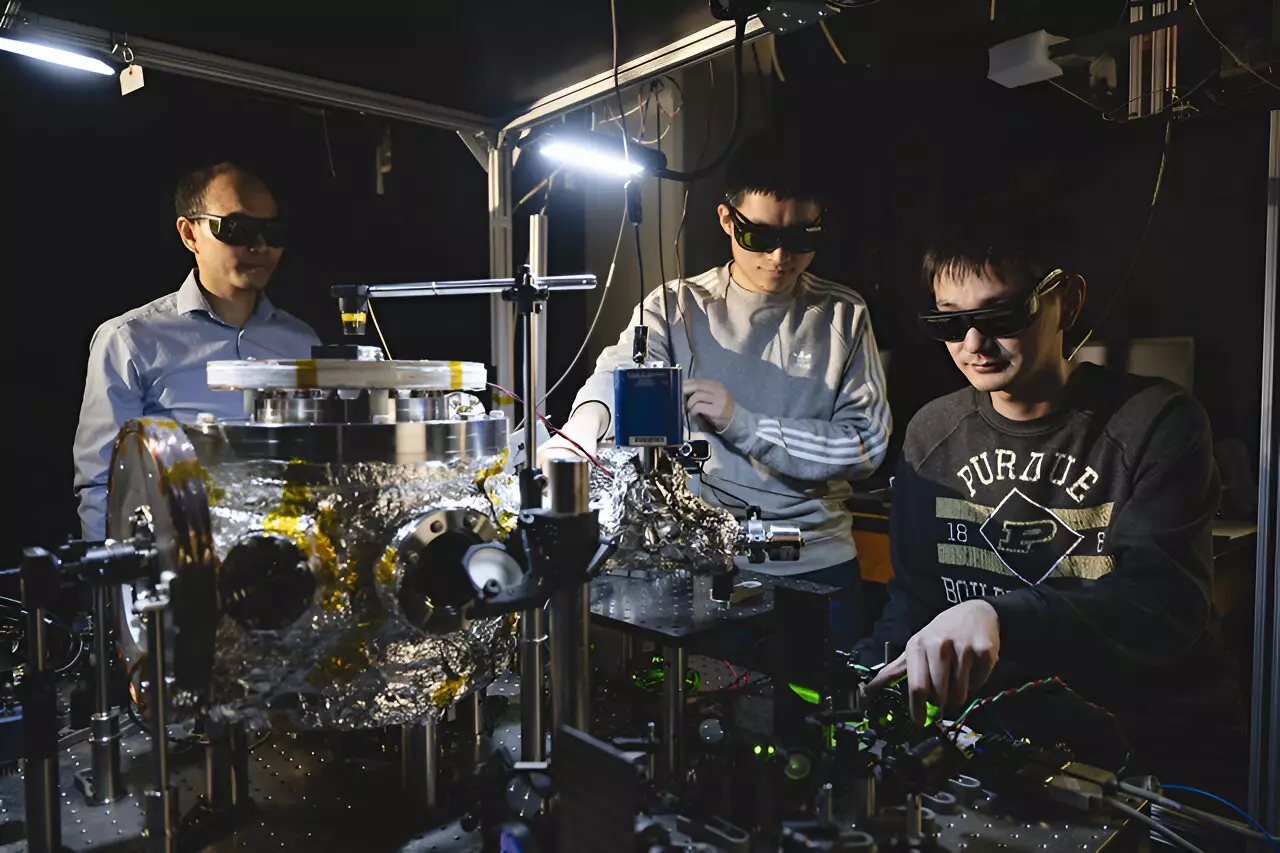In a groundbreaking exploration at Purdue University, physicists are merging the realms of quantum mechanics and modern engineering to host the smallest disco known to man. The centerpiece of this captivating event is a fluorescent nanodiamond, levitated and rotated at astonishing speeds, producing a mesmerizing display of light. This innovative experiment extends beyond mere spectacle; it lays the groundwork for developing a deeper understanding of quantum systems, their rotational behaviors, and potentially their interaction with gravity. Led by Professor Tongcang Li, the team’s findings, published in **Nature Communications**, mark a significant milestone for the field of levitated optomechanics.
The Mechanics of Spin Qubits
At the heart of these nanodiamonds lie spin qubits, fundamental elements in quantum computing and measurement. These qubits allow scientists to probe the nuances of quantum states and phenomena. Professor Li succinctly describes the tantalizing nature of their work: “Imagine tiny diamonds floating in a vacuum, harnessed to explore the elusive interaction between quantum mechanics and gravity.” By utilizing a specialized ion trap, the researchers can maintain stability and control over these diamonds in a high-vacuum environment, overcoming limitations faced in prior experiments.
One of the pivotal achievements of this research is their ability to rotate the diamonds at staggering speeds—up to 1.2 billion rotations per minute. This dizzying velocity is not merely for show; it serves to investigate how rapid rotation influences the spin states of the embedded qubits, a phenomenon known as the Berry phase. By measuring these effects, the research team aims to unravel aspects of quantum behavior that have long remained enigmatic.
The Role of Fluorescent Nanodiamonds
The fluorescent nanodiamonds, measuring roughly 750 nanometers in diameter, are synthesized through innovative methods involving high pressure and temperature. These diamonds are engineered with nitrogen-vacancy color centers—imperfections in the diamond structure that create electron spin qubits. Upon exposure to a green laser, the diamonds emit red light, enabling researchers to read their spin states. An additional infrared laser helps monitor the rotation of the levitated diamonds, essentially tracking the motion akin to how a disco ball reflects light across a dance floor.
The intricate setup and analysis of these fluorescent nanodiamonds were largely conducted by Li’s dedicated research group at Purdue. Their collaborative efforts have not only advanced the knowledge of quantum systems but also solidified Purdue’s reputation as a leader in this burgeoning field.
The contribution of collaborators from external institutions adds another layer of depth to this work. Experts such as Alejandro Grine from Sandia National Laboratories and Chong Zu from Washington University in St. Louis provided insightful feedback, helping refine experimental methods and manuscripts. This collaborative synergy exemplifies the nature of scientific advancement, where interdisciplinary efforts can pivotally shape research outcomes.
A key aspect of the experimental design involved sophisticated 3D simulations using COMSOL Multiphysics, enhancing the strategic positioning of the ion trap. The process of optimizing this design involved meticulous calculations to ensure the diamonds could be manipulated effectively. The resultant setup facilitates precise control over the spinning diamonds, allowing researchers to direct their movement and observe the associated quantum phenomena.
The implications of this discovery extend far beyond academic interest. The research opens a pathway for practical applications in advanced sensors and measurement devices, with potential use cases in navigation and communication technology. For instance, organizations like the US Air Force Research Laboratory are investigating how levitated nanoparticles can contribute to enhanced precision in navigation systems.
Professor Li emphasizes the broader vision, stating, “Achieving the ability to study quantum gravity experimentally would be a tremendous breakthrough.” This ambition taps into one of the most pressing questions in contemporary physics—the quantization of gravity—signaling potential advancements in both theoretical frameworks and experimental methodology.
The discovery of rotational effects in levitated nanodiamonds represents a significant step forward in quantum research. With ongoing innovations and experimental techniques, the team at Purdue University is paving the way for understanding complex interactions between quantum systems and gravity. As the dance of science continues, it not only captivates with its elegance but also holds the promise of meaningful advancements in technology and knowledge—echoing the vibrant spirit of a disco party that might just change the course of scientific inquiry.


Leave a Reply